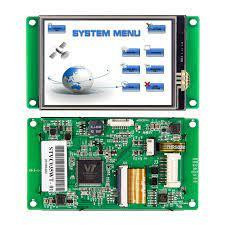Buying a computer monitor can be as simple or complex as you want it to be. You can buy the first computer monitor you find online or at your local store, but you are sure to make many mistakes that you will regret later.
- Budget
The first thing to consider before buying a screen for your computer is to state how much money you are willing to spend. Some things can help you buy a much cheaper monitor. This is a selection of computer monitors used with cash changers.
- Screen type
One of the most important things to consider when buying a custom lcd display is the type of monitor. Whether it's an LCD, IPS, or OLED screen, various characteristics such as viewing angles, contrast, and refresh rates are limited or enhanced by these technologies.
They encourage you to research each type of monitor, but if you feel you need to, here's a quick review. LCD monitors are cheaper and have higher refresh rates (maximum frames per second, gaming), and IPS monitors have excellent image quality (great for working or watching series). Either way, it's a good idea to use a monitor for your computer and forget about the idea of using a TV screen.
- Size
The other thing to consider before buying a computer monitor is the size you need. Display lcd sizes are measured in inches, so having a TV as a reference can help you understand what you need. The most used are 14 to 18 screens. On the other hand, a 22-inch to 24-inch screen is ideal if you want to run a computer. Larger displays are also available, including 27-inch and 32-inch displays designed for gaming and large workspaces.
- Size ratio
Now that you know how to choose a monitor based on screen type and size consider aspect ratio. When you talk about terms like "1999" and "Panorama," current film and TV formats come to mind. The same applies to screens, where the aspect ratio describes the screen's height and width ratio.
Most monitors on the market have an aspect ratio of 16:9, which means that the screen is wider than it is wide. Older models have an aspect ratio of 4:3 and are square. Finally, 7 inch tft lcd module has an ultra-wide 21:9 format and is designed for those who prefer one large screen to two.
- Resolution
Just like a TV, choosing the right resolution for your screen will not only allow you to play and watch shows better, but it will also allow you to work without problems. You can find screens with resolutions from Full HD to 2k, 4k, and 8k.
- Connection
In addition to the cables from the device to the stream, monitors have several video inputs, the most common being VGA, DVI, HDMI, and DP. Check the connection on your desktop computer or laptop to find out what type of connection you need. To do this, look directly at the side or back, or refer to the product data-sheet. There are converters between different formats, so don't worry if you don't have an exact match, but each has resolution and refresh rate limitations.

Comments
Post a Comment